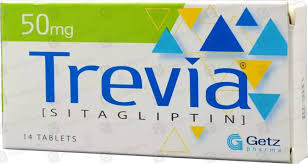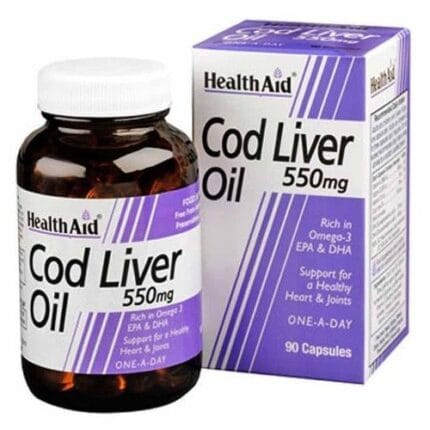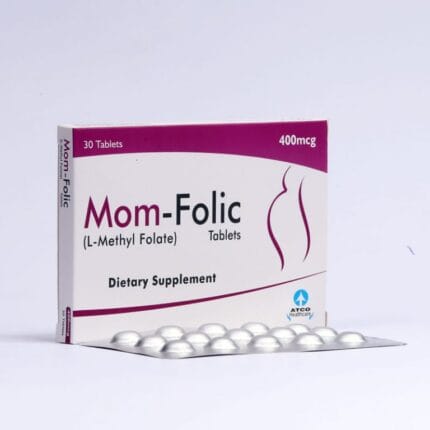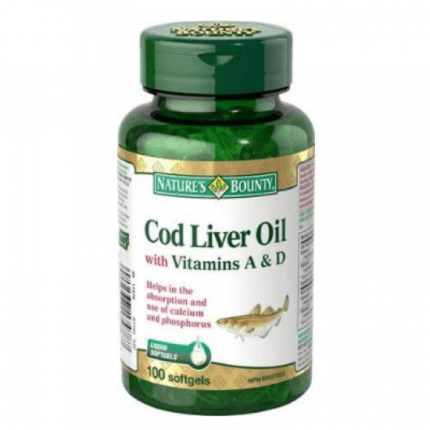Description
Sitagliptin is a drug used to treat diabetes, specifically it acts as a dipeptidyl peptidase-4 (DPP-4) inhibitor. By inhibiting the activity of DPP-4, sitagliptin enhances insulin secretion, and increases the levels of hormones called incretins, which help to reduce blood glucose levels. Consequently, this action helps to decrease fasting and postmeal blood glucose concentrations, which controls the symptoms of diabetes.
Ingredients
SitagliptinDrug Class
Dipeptidyl Peptidase-4 (DPP-4) Inhibitor
Dosage Form
Tablet
Uses
Unveiling its multifaceted uses and transformative applications as follows:
- Lowering of blood sugar levels occurs promoting insulin production and reducing glucagon release from the pancreas, lessening the chance of developing serious complications like strokes, heart attacks, and kidney problems.
- Reducing risk by mitigating the possibility of exacerbating symptoms driven by hyperglycemia (elevated blood sugar) like thirst, frequent urination, and hunger.
Dosage
Tailoring Treatment for Optimal Health, Prescribed Medication Dosage is:
- The starting dose for treating diabetes mellitus type 2 with Sitagliptin is 50 mg once daily.
- The maximum recommended dose of Sitagliptin is 100 mg once daily.
- When considering factors such as patient weight, efficacy, and tolerability, doses should be individualized based on clinical response and glycemic goals.
- It is important to avoid exceeding the maximum recommended dose to prevent hypoglycemia and other adverse effects.
In case of Overdose
Sitagliptin is one of the pharmaceutical agents that can be used in the treatment of diabetes, and while an overdose is not expected to produce life-threatening symptoms, it is important to still seek out emergency services if an overdose is suspected. Management of an overdose with Sitagliptin 50 mg may involve supportive care, monitoring of vital signs, and close observation for any signs or symptoms of toxicity. This may include gastric lavage if the overdose occurred recently, and continuous electrocardiographic monitoring if cardiotoxicity is suspected. Supportive care and symptom management are the main aspects of treatment, as there are no specific antidotes for Sitagliptin overdose. Oxygenation and ventilation may be required if respiratory depression is evident, and infusion of fluid and mineral supplements may be necessary to counteract the effects of hypoglycemia and fluid loss from excessive urination. Overall, specific treatment options exist for managing any symptoms that may arise through consultation with a clinical professional.
Missed Dose
When it comes to managing your diabetes with the medication Sitagliptin 50mg, it’s essential to adhere to the prescribed dosage schedule. However, if you happen to miss a dose, there are proactive steps you can take to ensure your wellness isn’t compromised. The first step is to take the missed dose as soon as possible, unless it’s almost time for your next scheduled dose. In this case, the optimal course of action is to skip the missed dose and return to your regular dosage schedule. It’s imperative to avoid the temptation of doubling up on doses or taking an extra dose to compensate for the missed one, as this could potentially lead to an overdose or an increased likelihood of experiencing adverse side effects. If you’re unsure about how to proceed or have any concerns, reaching out to your healthcare provider or pharmacist is always the best option. They can provide you with personalized advice and guidance on how to handle the missed dose safely, ensuring that you make the right decision specific to your situation. The key objective is to restore your regular dosing schedule as soon as possible, but ensuring your health takes priority. Instead of risking any potential complications by attempting to catch up on your own, it’s always advisable to seek professional advice and follow their guidance to effectively and safely manage your diabetes.
How To Use
Before starting to take Sitagliptin 50mg, it is important to read the medication guide provided by your pharmacist. This medication is typically taken once per day at the same time each day, with breakfast or dinner. Even though the optimal time of day for taking Sitagliptin is not fully clear, it is important to take it around the same time each day to maintain an even level of the drug in your bloodstream. The medication should be taken whole, as crushing, chewing, or breaking the tablet can affect its effectiveness.If you have difficulty swallowing the tablet whole, you can try placing it in a glass of water and stirring until it dissolves. Be sure to rinse the glass with water and drink the mixture immediately, within 30 minutes. If you miss a dose, take it as soon as you remember, as long as it has been less than three hours since your missed dose. If it has been longer than three hours, just skip the missed dose and take the next dose at the regular time. Do not double the dose to catch up.
When Not to Use
Discerning instances where this medication may not be appropriate:
- If you are allergic to Sitagliptin or any of the other ingredients in this medication, you should avoid taking it.
- If you have ever had kidney problems, pancreatitis, or a history of pancreatic cancer.
- If you are pregnant, planning to become pregnant, or breastfeeding.
- If you experience any severe side effects such as pancreatitis or gallstone pancreatitis, liver problems, or allergic reactions, discontinue use.
- It is not recommended for children or adults with type 1 diabetes or diabetic ketoacidosis.
Side Effects
Unraveling the side effects lurking behind this medications are as follows:
- Hypersensitivity Reactions
- Infections
- Hypoglycemia
- Diarrhea, nausea, vomiting, abdominal pain, dyspepsia
- Thrombocytopenia, bruising, anemia, neutropenia, and pancytopenia
- Increased serum creatine phosphokinase (CPK)
- Congestive heart failure
- Rash, including bullous eruptions
- Angioedema
- Musculoskeletal pain
- Hallucinations, delirium, disturbance in attention
- Gonadal dysfunction
- Oedema, fluid retention, syncope, palpitations
- Headache, fatigue, dizziness
Precautions & Warnings
Patients should consider the following precautions and warnings before using this medication:
- Avoid use if you have a history of pancreatitis, heart failure, or serious hypersensitivity reactions (e.g., angioedema) with other DPP-4 inhibitors.
- Exercise caution during periods of stress, such as trauma, infection, fever, or surgery.
- The medication is not indicated for use in patients with type 1 diabetes mellitus or diabetic ketoacidosis.
- Do not use if you have moderate to severe renal impairment (eGFR <45 mL/min/1.73 m²), including ESRD requiring haemodialysis or peritoneal dialysis.
- Special consideration is needed for pregnancy and lactation.
Drug Interactions
Drug interactions with sitagliptin include:
- CYP3A4 inhibitors (e.g., ketoconazole, clarithromycin) (generally minimal interaction as sitagliptin is not significantly metabolized by CYP3A4)
- CYP3A4 inducers (e.g., rifampin) (may decrease sitagliptin levels)
- Insulin or insulin secretagogues (e.g., sulfonylureas) (may increase risk of hypoglycemia)
- Other oral hypoglycemic agents (e.g., metformin) (may have additive effects on blood glucose control)
- Renal impairment (e.g., creatinine clearance < 50 mL/min) (may increase sitagliptin levels)
Storage/Disposal
Sitagliptin should be stored at room temperature, between 20°C to 25°C, in a tightly closed container. It should be kept away from moisture, heat, and light, and out of reach of children and pets.
For disposal, do not dispose of sitagliptin in household trash unless specifically instructed. Avoid flushing it down the toilet, as this can harm the environment. Follow local regulations for medication disposal, including using drug take-back programs if available.
Laboratory Screening
While on medication such as Sitagliptin 50mg, it is important to ensure that the medication is effective and the patient’s health is not compromised. Lab tests may be conducted to monitor the patient’s blood sugar levels, lipid profile, kidney function, and liver function while taking the medication. 1. Blood Sugar Tests:


Get Your Healthcare Delivered Nationwide!
No matter where you reside in Pakistan, medlife.pk brings your healthcare essentials straight to your doorstep! We partner with trusted shipping companies like TCS, M&P, LEOPARD Courier, Trax, and Call Courier for nationwide delivery.
For ultimate convenience, enjoy Cash on Delivery (COD) with a flat rate of Rs.299 across Pakistan. Prefer to pay upfront? Orders over Rs.3,000 receive free shipping when you pay with Bank Transfer, JazzCash, Easypaisa, or Credit/Debit Card. And the perks don't stop there! Orders exceeding Rs.5,000 with advance payment not only get free shipping, but also earn you a discount coupon for your next medlife.pk purchase.
Rest assured, our team meticulously packs and ships your order for safe arrival, ensuring you receive the genuine products you deserve. So, browse our selection, choose your payment method, and get ready to experience the medlife.pk difference! Happy shopping!




















Reviews
There are no reviews yet.